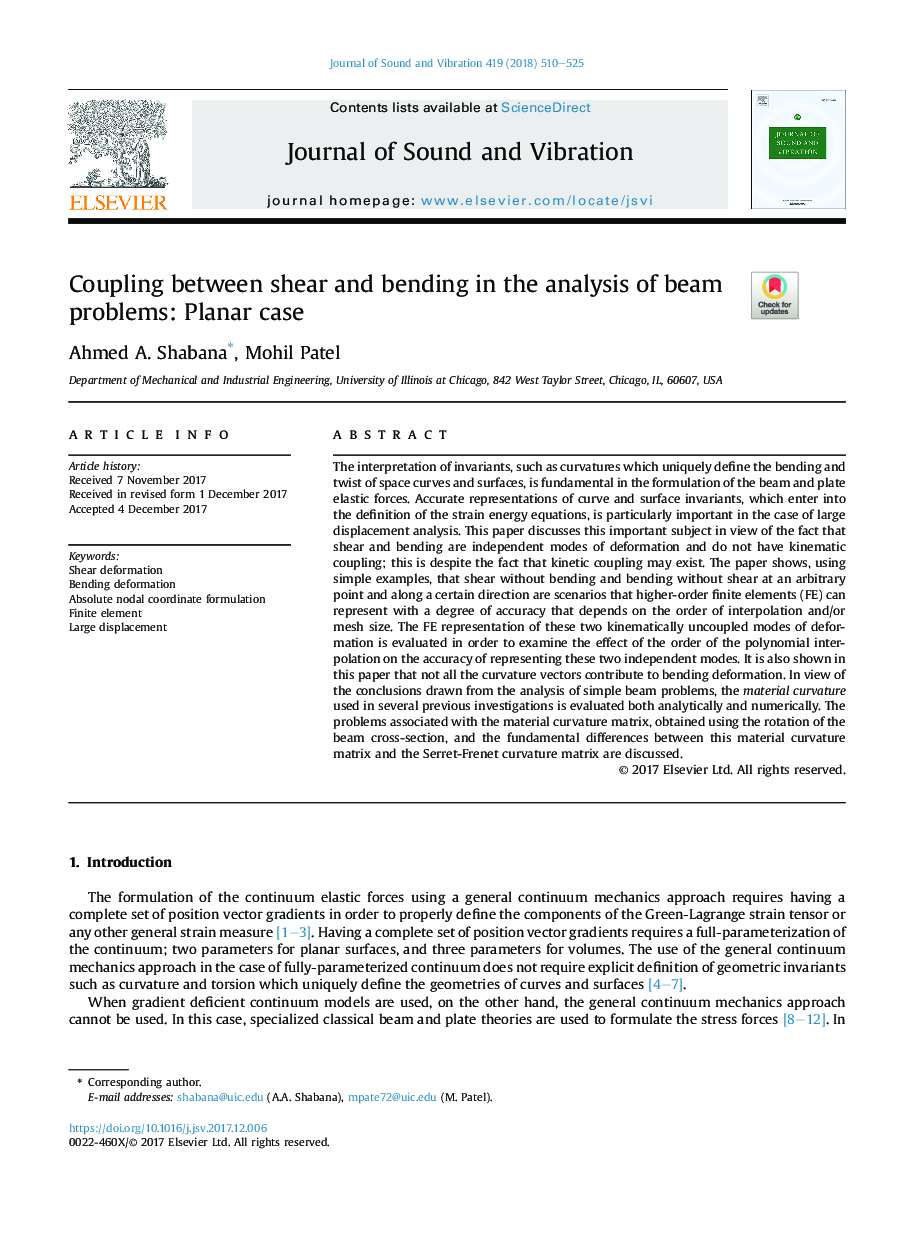| Article ID | Journal | Published Year | Pages | File Type |
|---|---|---|---|---|
| 6753699 | Journal of Sound and Vibration | 2018 | 16 Pages |
Abstract
The interpretation of invariants, such as curvatures which uniquely define the bending and twist of space curves and surfaces, is fundamental in the formulation of the beam and plate elastic forces. Accurate representations of curve and surface invariants, which enter into the definition of the strain energy equations, is particularly important in the case of large displacement analysis. This paper discusses this important subject in view of the fact that shear and bending are independent modes of deformation and do not have kinematic coupling; this is despite the fact that kinetic coupling may exist. The paper shows, using simple examples, that shear without bending and bending without shear at an arbitrary point and along a certain direction are scenarios that higher-order finite elements (FE) can represent with a degree of accuracy that depends on the order of interpolation and/or mesh size. The FE representation of these two kinematically uncoupled modes of deformation is evaluated in order to examine the effect of the order of the polynomial interpolation on the accuracy of representing these two independent modes. It is also shown in this paper that not all the curvature vectors contribute to bending deformation. In view of the conclusions drawn from the analysis of simple beam problems, the material curvature used in several previous investigations is evaluated both analytically and numerically. The problems associated with the material curvature matrix, obtained using the rotation of the beam cross-section, and the fundamental differences between this material curvature matrix and the Serret-Frenet curvature matrix are discussed.
Keywords
Related Topics
Physical Sciences and Engineering
Engineering
Civil and Structural Engineering
Authors
Ahmed A. Shabana, Mohil Patel,
